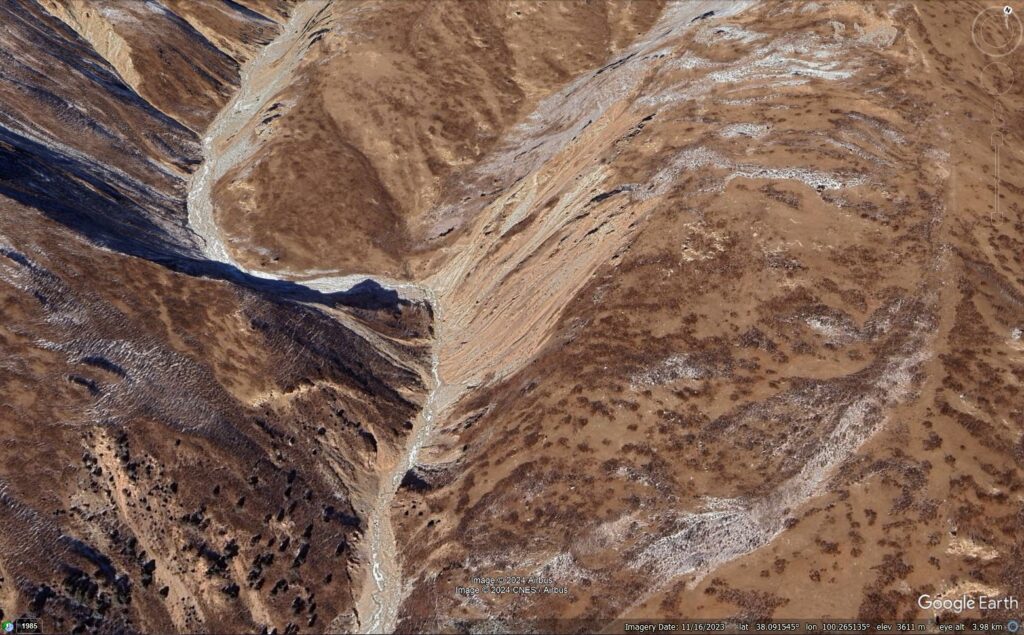The Landslide Blog is written by Dave Petley, who is widely recognized as a world leader in the study and management of landslides.
Debris flows in arid and semi-arid areas are less common than in more humid environments, but they can have devastating consequences. There has been considerably less research into these processes than might be expected, leaving a substantial knowledge gap.
An interesting paper (Jiang et al. 2024) has just been published in the journal Landslides, which examines the 22 July 2021 Xiao Dongsuo debris flow, which occurred on the northeast margin of the Tibetan Plateau. I have extracted two Planet Labs images of the site – the first was taken on the day of the failure, but prior to the event:-

The second image was collected a few days later on 31 July 2021:-

And below is a slider to allow the two images to be compared:-


The location of this landslide is [38.072, 100.306]. According to the analysis by Jiang et al. (2024), it was 8.34 km long, with a vertical travel distance of 1.373 m and a maximum volume of 119,000 cubic metres.
The initiation mechanism of the landslide is very interesting. This Google Earth image (from November 2023), located at [38.0916, 100.2642], shows the site at which the debris flow started:-

The flow in the main channel was from the top of the image to the bottom. Jiang et al. (2024) propose that a rainfall-induced flood in the channel eroded the toe of the landslide on the right of the image (on the east bank of the channel), which failed. This triggered a failure on the opposite side, and the debris from the two landslides blocked the channel. The landslide dam duly failed, releasing the Xiao Dongsuo debris flow.
The volume of the debris flow was supplemented by failure of slopes along the channel. Deposition initiated as the channel gradient reduced, but as the images above show, the channel was profoundly altered by the debris flow. Whilst there was some infrastructure damage, the landslide caused no loss of life.
The triggering of the Xiao Dongsuo debris flow is fascinating. Jiang et al. (2024) note that in the week before the landslide, temperatures in the area were exceptionally warm. The authors suggest that this induced degradation of permafrost and melting of snow. The source area of the debris flow was in the permafrost area.
On the day of the landslide, the nearest weather station recorded 46.1 mm of rainfall in a 12 hour period, which is the highest recorded value for this site. It is interesting to note that in many humid environments, such a value would not trigger landslides. This emphasises both the role of the high temperatures recorded in the area and the role of relative (rather than absolute) precipitation in initiating landslides.
Of course, the role of extreme heat and relatively high precipitation events indicates the likely impacts of climate change. Jiang et al. (2024) demonstrate that this part of the Tibetan Plateau is experiencing both a warming trend and an increase in precipitation, suggesting that we will see more events of this type. This is being replicated in many other areas around the world. For those of us who study landslides, we will have many events to investigate in the years ahead.
Reference
Jiang, Z., Wang, J., Zhou, L. et al. 2024. Formation-evolutionary mechanism of large debris flow in semi-arid region, the northeastern Tibetan Plateau. Landslides. https://doi.org/10.1007/s10346-024-02233-9
Planet Team (2024). Planet Application Program Interface: In Space for Life on Earth. San Francisco, CA. https://www.planet.com/


